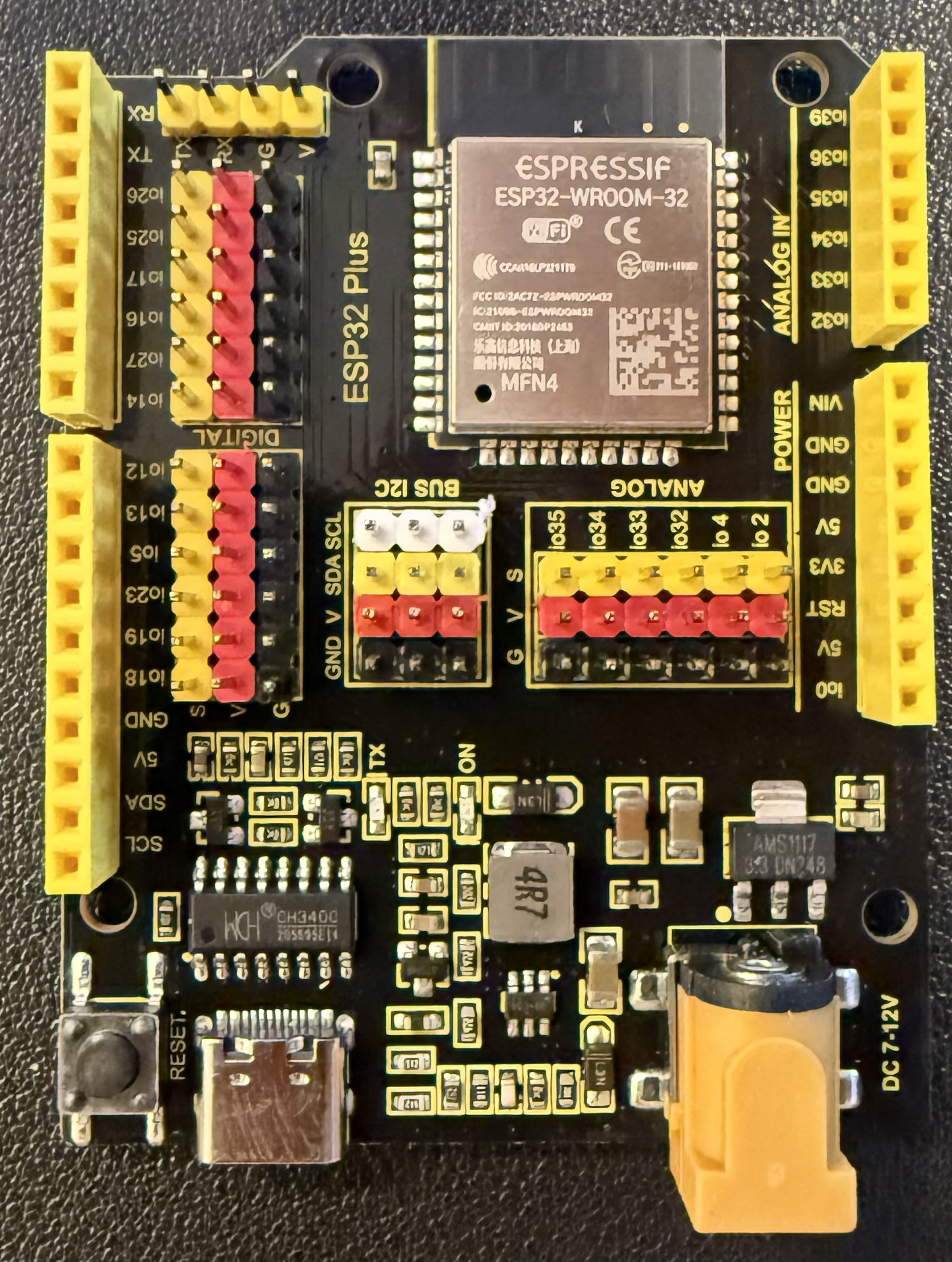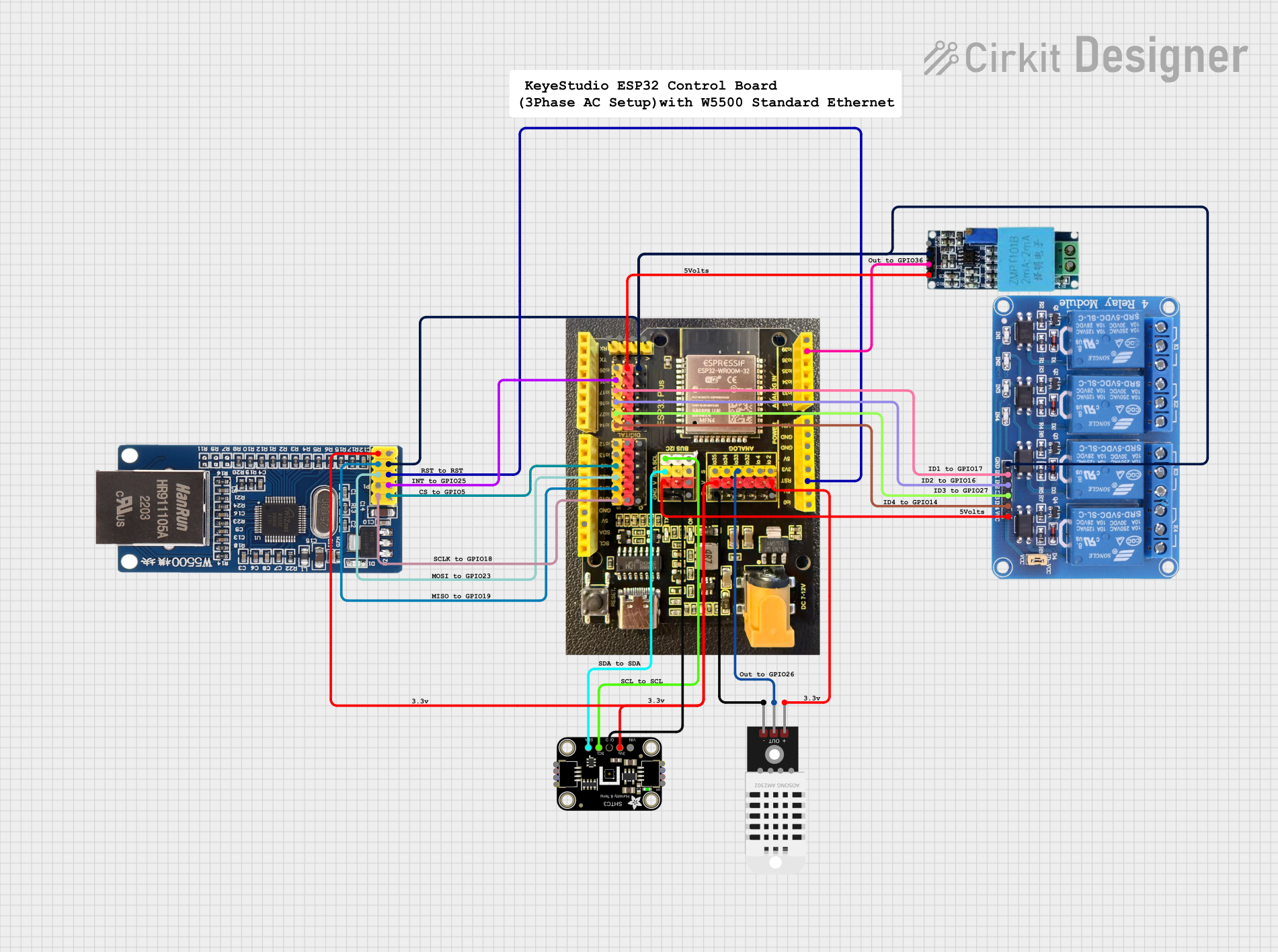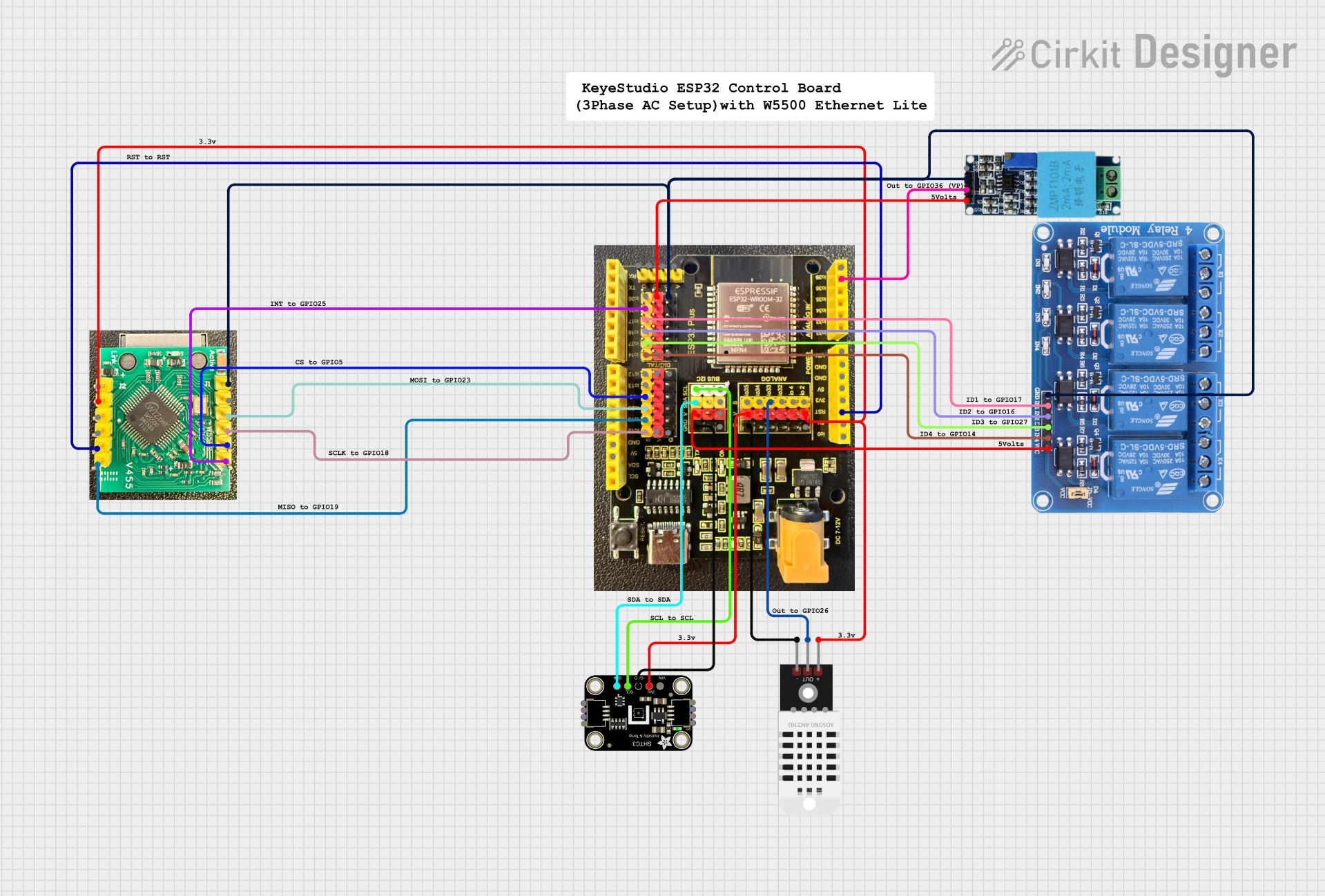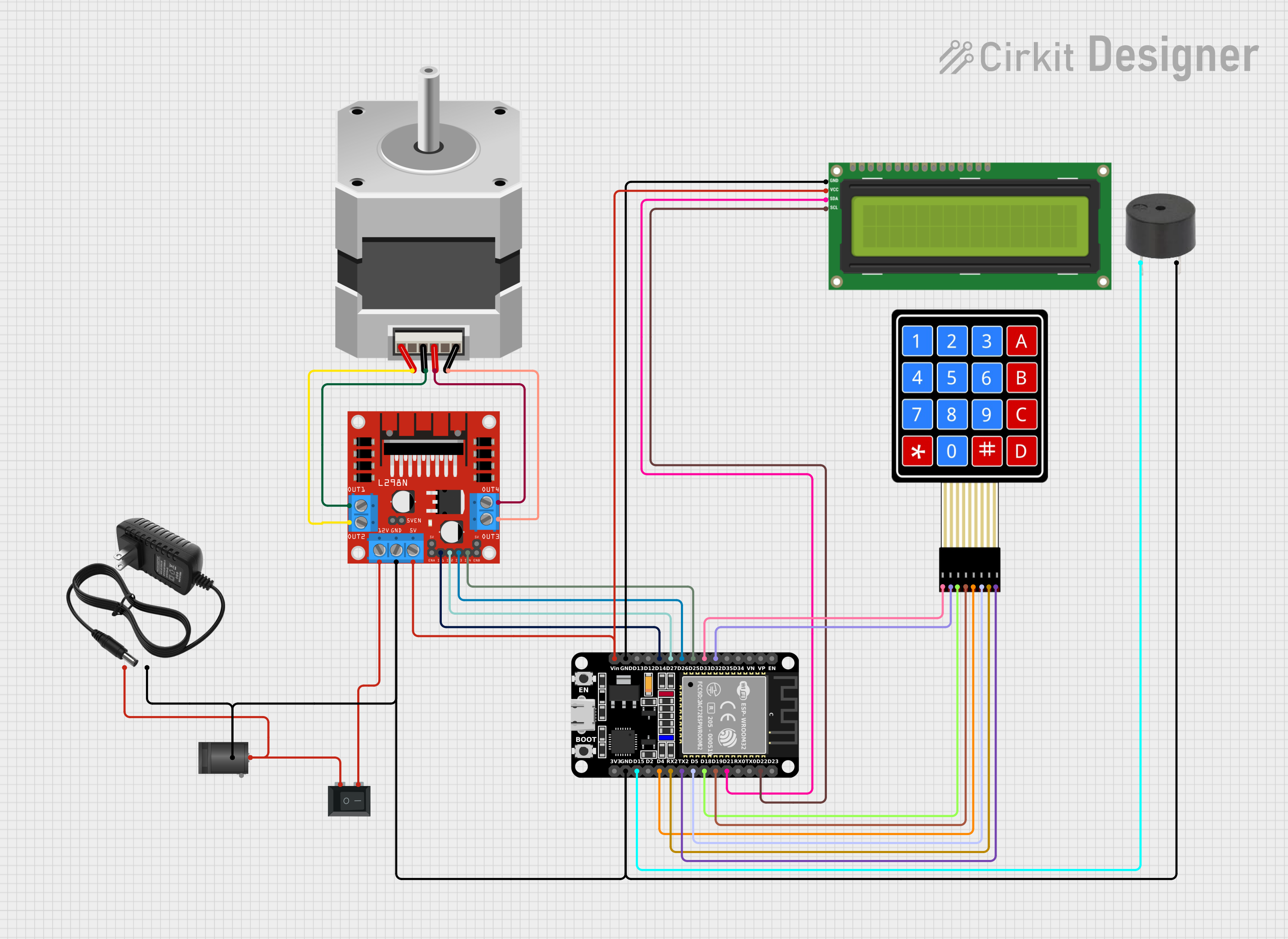
How to Use Keyestudio Control Board for ESP32: Examples, Pinouts, and Specs

 Design with Keyestudio Control Board for ESP32 in Cirkit Designer
Design with Keyestudio Control Board for ESP32 in Cirkit DesignerIntroduction
The Keyestudio Control Board for ESP32 (part number KS5016) is a versatile and powerful microcontroller board that integrates the ESP32 chip. It is designed to facilitate easy interfacing with a wide range of sensors, actuators, and other electronic components, making it an ideal choice for hobbyists, educators, and professionals working on IoT projects, robotics, smart home applications, and more.
Explore Projects Built with Keyestudio Control Board for ESP32

 Open Project in Cirkit Designer
Open Project in Cirkit Designer
 Open Project in Cirkit Designer
Open Project in Cirkit Designer
 Open Project in Cirkit Designer
Open Project in Cirkit Designer
 Open Project in Cirkit Designer
Open Project in Cirkit DesignerExplore Projects Built with Keyestudio Control Board for ESP32

 Open Project in Cirkit Designer
Open Project in Cirkit Designer
 Open Project in Cirkit Designer
Open Project in Cirkit Designer
 Open Project in Cirkit Designer
Open Project in Cirkit Designer
 Open Project in Cirkit Designer
Open Project in Cirkit DesignerTechnical Specifications
General Features
- Microcontroller: ESP32
- Operating Voltage: 3.3V
- Input Voltage (recommended): 7-12V
- Input Voltage (limit): 6-20V
- Digital I/O Pins: 26
- Analog Input Pins: 12
- Flash Memory: 4MB
- SRAM: 520 KB
- Clock Speed: 240 MHz
- Wi-Fi: 802.11 b/g/n
- Bluetooth: v4.2 BR/EDR and BLE
Pin Configuration and Descriptions
| Pin Number | Function | Description |
|---|---|---|
| 1 | 3V3 | 3.3V power supply |
| 2 | GND | Ground |
| 3-28 | GPIO0 - GPIO25 | General Purpose Input/Output pins |
| 29-32 | VIN | Input voltage to the board |
| 33-34 | TX0, RX0 | UART communication pins |
| 35-36 | SDA, SCL | I2C communication pins |
| 37-38 | SVP, SVN | ADC calibration pins |
| 39 | EN | Reset pin |
| 40 | GND | Ground |
Note: This is a simplified pin configuration for illustrative purposes. Please refer to the official datasheet for a complete pinout and function list.
Usage Instructions
Connecting to a Circuit
Powering the Board:
- Connect a 7-12V power supply to the VIN and GND pins.
- Alternatively, you can power the board via the micro-USB port.
Interfacing with Sensors/Actuators:
- Use the GPIO pins to connect sensors and actuators.
- Ensure that the components are compatible with the board's operating voltage (3.3V).
Programming the Board:
- Connect the board to a computer using a micro-USB cable.
- Use the Arduino IDE or other compatible software to write and upload your code.
Important Considerations and Best Practices
- Always disconnect the board from the power source before making or altering connections.
- Be mindful of the power requirements of connected components to avoid overloading the board.
- Use pull-up or pull-down resistors with GPIO pins when necessary to ensure proper logic levels.
- Avoid exposing the board to extreme temperatures, moisture, or mechanical stress.
Example Code for Arduino UNO
// Blink an LED connected to GPIO5
#define LED_PIN 5
void setup() {
pinMode(LED_PIN, OUTPUT); // Initialize GPIO5 as an output
}
void loop() {
digitalWrite(LED_PIN, HIGH); // Turn the LED on
delay(1000); // Wait for a second
digitalWrite(LED_PIN, LOW); // Turn the LED off
delay(1000); // Wait for a second
}
Note: This example assumes an LED is connected to GPIO5 with a suitable current-limiting resistor.
Troubleshooting and FAQs
Common Issues
Board not recognized by computer:
- Ensure the micro-USB cable is properly connected and the computer's USB port is functioning.
- Try using a different USB port or cable.
Unable to upload code:
- Check that the correct board and port are selected in the Arduino IDE.
- Press the EN button to reset the board and try uploading again.
GPIO pin not functioning:
- Verify that the pin is not being used by another process.
- Check your circuit connections and components for any faults.
FAQs
Q: Can I use the Arduino IDE to program the ESP32 Control Board? A: Yes, the Arduino IDE can be used to program the board after installing the ESP32 add-on.
Q: What is the maximum current that the GPIO pins can source/sink? A: The GPIO pins can typically source/sink up to 12 mA. Refer to the ESP32 datasheet for exact specifications.
Q: Does the board have onboard voltage regulation? A: Yes, the board includes a voltage regulator that provides a stable 3.3V output.
For further assistance, consult the Keyestudio community forums or contact Keyestudio support directly.